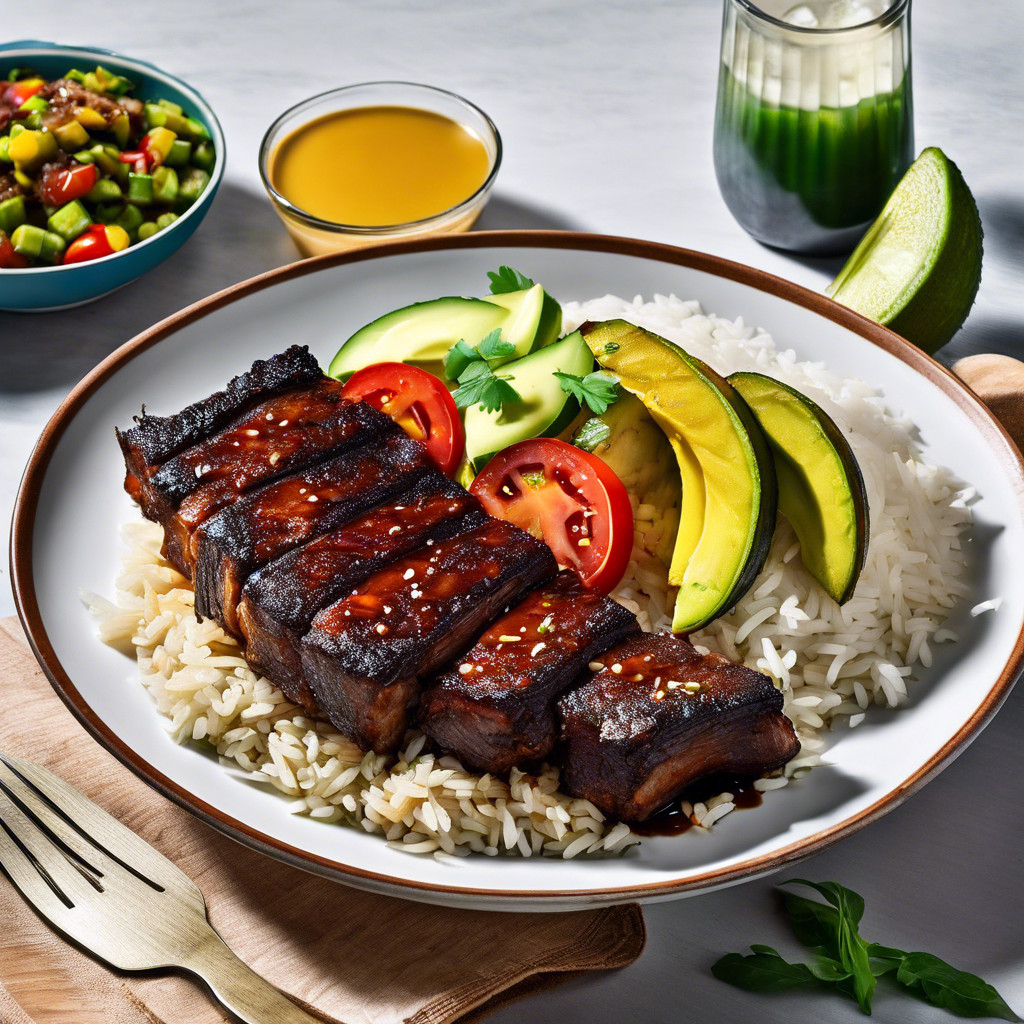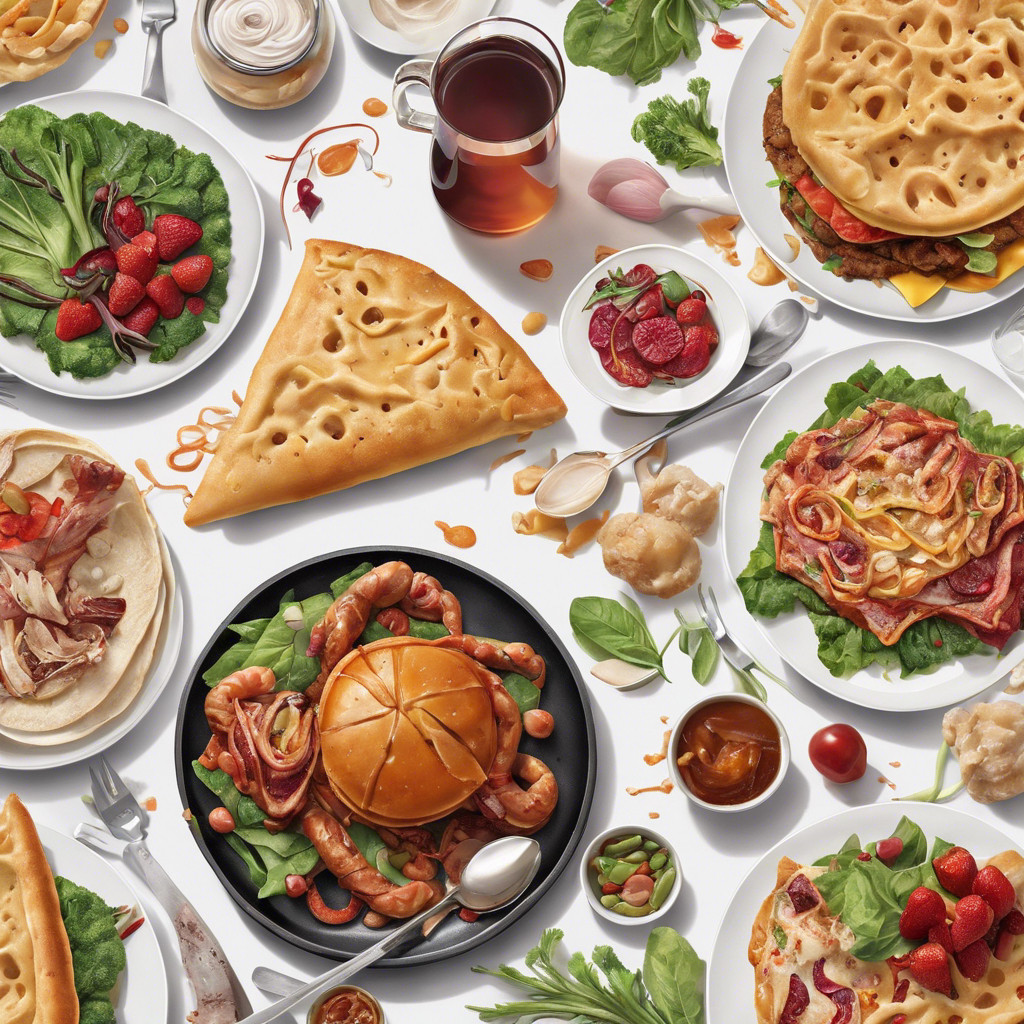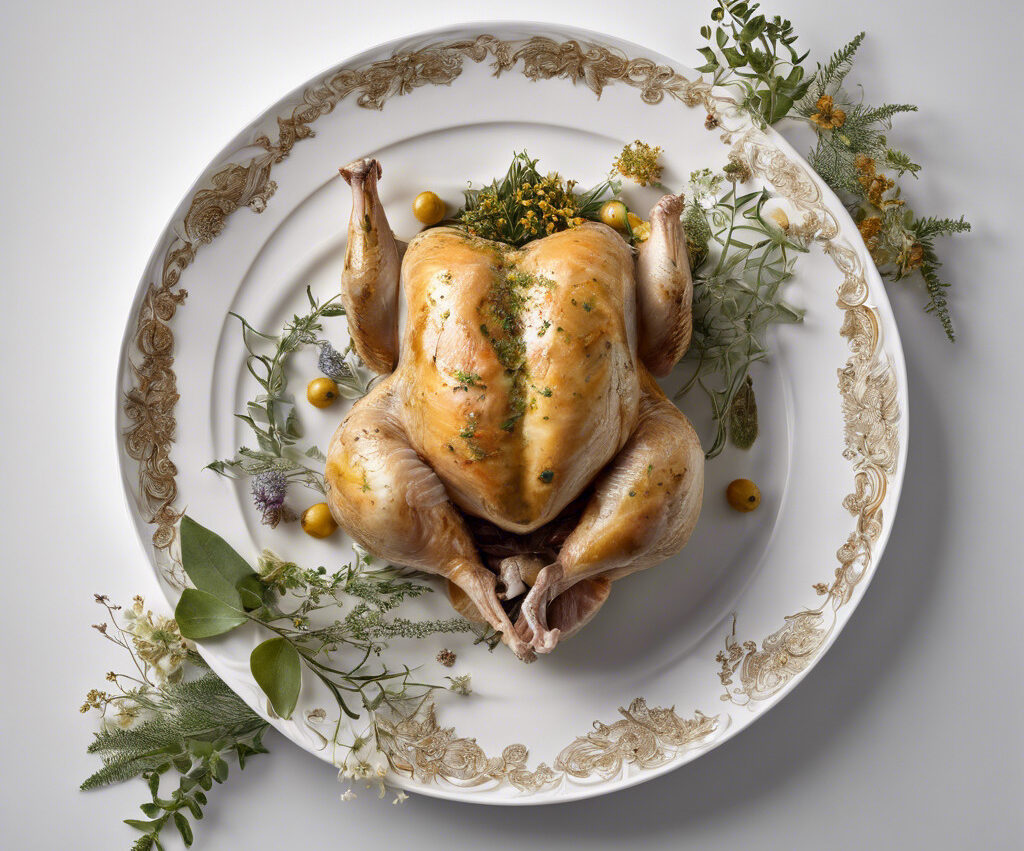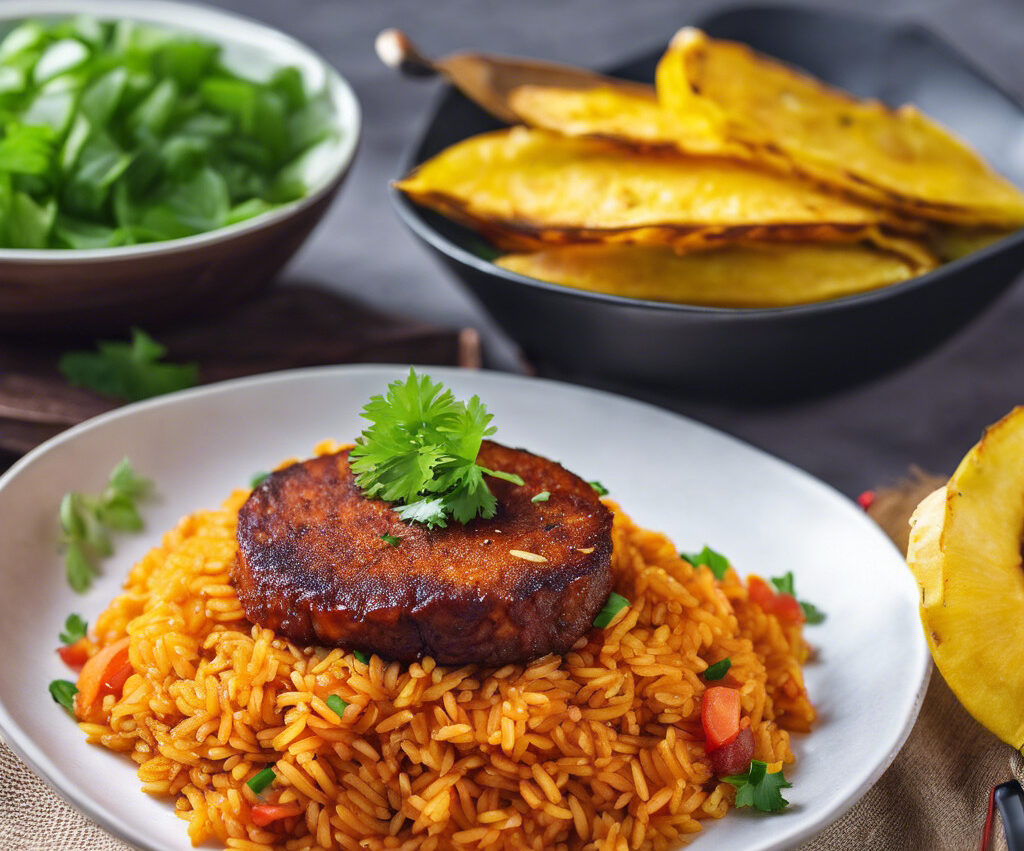Have you ever noticed that there’s something satisfying about eating leftovers? It’s not just about convenience or saving money; there’s a secret behind why leftovers always seem to taste better the next day. In this article, we’ll explore the science behind this phenomenon and uncover the reasons why those reheated meals are often more delicious than the original. From the changes that happen to the flavors and textures to the psychological factors that come into play, get ready to discover the magic of leftovers and why they can be a delightful culinary experience.

The Science behind Leftovers
Flavor Development
Have you ever noticed that leftovers often seem to taste even better the next day? There’s actually a scientific explanation for this phenomenon. When food is cooked and allowed to sit overnight, chemical reactions occur that enhance the flavors. This is especially true for dishes with complex flavors, such as stews and casseroles. The ingredients have time to meld together, allowing the flavors to deepen and develop. So, don’t be surprised if that leftover lasagna tastes even more delicious the next day!
Chemical Reactions
Chemical reactions also play a role in why leftovers taste better. When food is cooked, various compounds break down and release volatile molecules. These molecules are responsible for the enticing aromas that waft through your kitchen. As leftovers sit in the refrigerator, these compounds continue to react, leading to even more flavor development. These reactions can also result in the formation of new compounds, adding complexity to the taste profile of the leftovers.
Enhanced Texture
In addition to flavor development, letting food sit overnight can also lead to an enhanced texture. Take for example a dish like chili or stew. The extended resting time allows the ingredients to absorb more of the liquid, resulting in a thicker and more satisfying consistency. This can make the leftovers feel heartier and more enjoyable to eat. So, if you find yourself with a pot of chili or a hearty curry, consider letting it sit overnight to experience the textural improvements.
Factors Influencing the Taste of Leftovers
Time
Time is a crucial factor when it comes to the taste of leftovers. Allowing food to sit for an extended period of time, typically overnight, gives the flavors and textures a chance to develop and meld together. The more time you give the leftovers, the more pronounced the improvements in taste will be. However, it’s important to note that this may not apply to all types of food. Delicate items like salads or certain fruits are best enjoyed fresh and may not benefit from extended resting periods.
Refrigeration
Proper refrigeration is essential for maintaining the quality and safety of leftovers. When food is refrigerated, the cold temperature slows down the growth of bacteria, preventing spoilage. This ensures that your leftovers stay fresh and safe to eat. However, it’s important to refrigerate food promptly. Leaving it out at room temperature for too long allows bacteria to multiply, increasing the risk of foodborne illnesses.
Temperature
Temperature also plays a role in the taste of leftovers. When food is chilled in the refrigerator, the flavors tend to become more concentrated. Cold temperatures can dull the sensitivity of our taste buds, making the flavors appear stronger and more enjoyable. On the other hand, certain dishes may benefit from being served warm or at room temperature. It’s all about finding the ideal temperature that brings out the best in your leftovers.
Flavors Melding
One of the reasons why leftovers often taste better is because the flavors have had time to meld together. The different ingredients in a dish have had a chance to interact, creating a harmonious balance of flavors. This is particularly true for dishes with strong spices or bold ingredients. Over time, the individual flavors integrate and complement each other, resulting in a more cohesive and enjoyable taste experience.
Familiarity
Psychological factors also come into play when it comes to the taste of leftovers. Familiarity can greatly impact our perception of flavor. When we eat leftovers, we are often reminded of the initial meal they were derived from. This sense of familiarity can evoke positive emotions and memories associated with the original meal, enhancing our enjoyment of the leftovers. So, the next time you sit down to savor those reheated leftovers, consider the power of familiarity in making them taste even better.
Benefits of Letting Food Sit Overnight
Flavor Intensification
As mentioned earlier, letting food sit overnight allows the flavors to intensify. The extended resting time allows for the mingling of ingredients and the development of complex flavors. Acids have a chance to mellow, spices become more pronounced, and the overall taste profile becomes richer. If you’ve ever had a curry or a pasta dish that tasted better the next day, you’ve experienced firsthand the flavor intensification that comes from letting food sit overnight.
Moisture Redistribution
Another benefit of letting food sit overnight is the redistribution of moisture. When food is initially cooked, moisture is often concentrated in certain areas, leading to uneven texture and flavor distribution. However, as the food sits, the moisture redistributes, resulting in a more even and balanced eating experience. This can be particularly beneficial for dishes like lasagna or casseroles, where a balanced moisture level can greatly enhance the enjoyment of each bite.
Tenderizing
Certain cuts of meat and tough vegetables can benefit from extended resting periods. As leftovers sit, the natural enzymes present in the ingredients have time to break down the connective tissues and fibers, resulting in a tenderizing effect. This can make the meat or vegetables more tender and enjoyable to eat. So, next time you have a leftover roast or a stir-fry, consider letting it sit overnight to experience the magic of tenderized leftovers.
Convenience and Time Saving
Letting food sit overnight can also be a convenient and time-saving option. By preparing a larger batch of food and saving the leftovers, you are essentially giving yourself a head start on your next meal. This can be especially helpful during busy weekdays when you don’t have as much time to cook. Simply reheat the leftovers, and you have a delicious, homemade meal ready to enjoy with minimal effort. It’s a win-win situation that saves you time and ensures you savor every last bite of your culinary creations.
Psychological Factors
Anticipation
Leftovers can evoke a sense of anticipation that adds to their enjoyment. Knowing that you have a delicious meal waiting for you in the fridge can create a sense of excitement and make the eating experience even more pleasurable. It’s like having a secret stash of your favorite food, ready to be enjoyed whenever you want. So, embrace the anticipation and look forward to those leftovers waiting for you at home.
Positive Associations
Psychologically, leftovers can have positive associations that contribute to their appeal. For example, leftovers from a special family meal or a beloved holiday dish can evoke warm memories and a sense of nostalgia. These positive associations can enhance the overall enjoyment of the leftovers, making them taste even better. So, when you indulge in those leftovers from a special occasion, savor not just the flavors but also the memories they bring.
Sense of Accomplishment
Turning leftovers into a delicious meal can give us a sense of accomplishment. It’s a creative challenge that allows us to showcase our culinary skills and make the most of the ingredients at hand. Transforming leftovers into something new and exciting can be immensely satisfying and boost our self-confidence in the kitchen. So, the next time you find yourself facing a fridge full of leftovers, embrace the opportunity to create something delicious and feel a sense of accomplishment.
Reduced Waste
One of the most significant psychological benefits of embracing leftovers is the sense of reducing waste. Food waste is a major global issue, and by making the most of our leftovers, we actively contribute to sustainability. Knowing that we are making a positive impact on the environment can create a sense of satisfaction and fulfillment. So, by embracing leftovers, we not only enjoy tasty meals but also contribute to a more sustainable future.

Flavor Enhancement Techniques for Leftovers
Seasoning Adjustments
When it comes to enhancing the flavor of leftovers, seasoning adjustments can make a world of difference. By adding a sprinkle of herbs, a dash of spices, or a splash of flavorful sauce, you can breathe new life into your leftovers. Experiment with different seasonings and find combinations that complement the existing flavors. Don’t be afraid to get creative and transform ordinary leftovers into extraordinary meals with just a few simple seasoning adjustments.
Reheating Methods
The way you reheat leftovers can impact their flavor and texture. Some dishes, like pasta or stir-fries, are best reheated on the stovetop, as it allows for even heating and a crispy texture. Other dishes, like casseroles or soups, may benefit from being reheated in the oven, as it can help to re-crisp the top layer or give it a golden finish. Experiment with different reheating methods to find the one that works best for each type of leftover, and enjoy them as if they were freshly made.
Creative Ingredient Combos
Don’t limit yourself to reheating leftovers as they are. Get creative and combine them with fresh ingredients to create new and exciting dishes. Leftover chicken can be turned into a flavorful salad, rice can be transformed into fried rice with the addition of vegetables and soy sauce, and vegetables can be used to make a delicious omelet. By thinking outside the box and using your creativity, you can transform leftovers into something entirely different and delicious.
Texture Modifications
Texture can greatly influence our enjoyment of leftovers. If you find the texture of your leftovers lacking, consider making some modifications to improve it. For example, you can add some crispy breadcrumbs on top of a casserole and bake it in the oven to achieve a satisfying crunch. Alternatively, you can add some fresh greens or crunchy vegetables to a soft leftover dish to provide a contrasting texture. Play around with different texture modifications to create a more enjoyable eating experience.
Cultural and Regional Differences
Traditional Recipes
Cultural and regional differences play a significant role in the way leftovers are viewed and utilized. In some cultures, leftovers are not only embraced but also celebrated. Traditional recipes often call for the deliberate creation of leftovers, as they are considered to enhance the flavors and allow the ingredients to fully develop. For example, in Italian cuisine, leftover pasta is often used to make frittatas or soups. Exploring traditional recipes from different cultures can provide inspiration and new ways to embrace and enjoy leftovers.
Food Preservation Techniques
Food preservation techniques vary across different cultures and regions. Some cultures have developed unique methods to preserve and make the most of leftovers. For example, fermentation is a popular preservation method in many Asian cultures. Leftover rice can be used to make kimchi fried rice, and leftover vegetables can be pickled to prolong their shelf life. Exploring these preservation techniques can help you learn new ways to extend the lifespan of your leftovers and reduce food waste.
Leftover Culinary Traditions
Each culture has its own culinary traditions surrounding leftovers. In some regions, leftovers are intentionally saved and used as the basis for new dishes. For example, in British cuisine, the roast dinner leftovers are often transformed into sandwiches or stews. By exploring these culinary traditions, you can discover new flavor combinations and creative ideas for repurposing your own leftovers. Embracing these traditions can add variety and excitement to your meals while reducing waste.

Embracing Leftovers: Practical Tips
Proper Storage Practices
Proper storage practices are essential to maintain the quality and safety of leftovers. When storing leftovers, make sure to transfer them to airtight containers or wrap them tightly in plastic wrap or aluminum foil. This helps to prevent moisture loss and keep the flavors intact. Label the containers with the date to ensure you use the oldest leftovers first. Additionally, be mindful of the shelf life of each type of leftover and discard anything that has been stored for too long to avoid any potential health risks.
Using Leftovers Wisely
Using leftovers wisely is a key aspect of embracing them. Plan your meals in advance and incorporate leftovers into your meal planning. For example, roast chicken can be transformed into sandwiches or added to salads, and leftover vegetables can be used in stir-fries. By using leftovers as ingredients in new dishes, you not only reduce waste but also create unique and satisfying meals. Get creative and experiment with different combinations to discover the endless possibilities of repurposing leftovers.
Creative Meal Planning
Creative meal planning can help you make the most of your leftovers. Instead of viewing them as a mere afterthought, incorporate them into your meal planning process from the start. For example, if you’re planning to make a batch of chili, intentionally make extra to have leftovers for future meals. By preparing larger portions and intentionally setting aside leftovers, you ensure that you have a variety of options for future meals. This can save you time, money, and reduce food waste.
Repurposing Leftovers
Repurposing leftovers is a fun and creative way to enjoy them in new and exciting ways. Don’t be limited by the original dish. Instead, consider repurposing leftovers into entirely different meals. For example, leftover grilled vegetables can be used as a topping for pizza, and leftover mashed potatoes can be transformed into crispy potato pancakes. The possibilities are endless, so let your culinary creativity run wild and create amazing dishes with your leftovers.
Making the Most of Holiday Leftovers
Traditional Dish Revamps
Holiday leftovers present a unique opportunity to revamp traditional dishes. Take those Thanksgiving leftovers, for example. Instead of simply reheating the same meal, get creative and turn them into entirely new dishes. Turkey can be used in hearty sandwiches, mashed potatoes can be transformed into flavorful pancakes, and cranberry sauce can be turned into a tangy sauce for chicken or pork. By revamping traditional holiday dishes, you bring new life to leftovers and keep the celebration going.
Holiday Sandwiches
One of the simplest and most delicious ways to enjoy holiday leftovers is by making sandwiches. Layer slices of turkey or ham with cranberry sauce, stuffing, and any other desired toppings between two slices of bread or rolls. The combination of flavors and textures creates a mouthwatering sandwich that captures the essence of the holiday meal. So, don’t overlook the power of a well-crafted holiday sandwich when it comes to enjoying your post-celebration leftovers.
Soups and Stews
Another excellent way to utilize holiday leftovers is by incorporating them into soups and stews. Use the leftover turkey or ham bones to create a rich stock as the base for a flavorful soup. Add in any leftover vegetables, gravy, and meat to create a hearty and comforting meal. By simmering the leftovers together, you infuse the soup or stew with the flavors of the holiday feast, making it a satisfying and delicious way to enjoy the leftovers.
Freezing for Future Meals
If you find yourself with an abundance of holiday leftovers, freezing them for future meals is a smart option. Package individual portions of the leftovers in freezer-safe containers or bags and label them with the contents and date. This way, you can extend the lifespan of your leftovers and have a taste of the holiday season throughout the year. Freezing is an excellent way to prevent food waste and ensure that you can enjoy the flavors of the holiday season whenever you desire.
Overcoming Leftover Prejudices
Psychological Perception
Overcoming leftover prejudices often begins with changing our psychological perception of them. Instead of viewing leftovers as dull or unexciting, try reframing them as an opportunity for creativity and resourcefulness. Shift your mindset from seeing leftovers as a chore to seeing them as a canvas to create new and exciting meals. By adopting a positive and open-minded approach, you can overcome any negative perceptions and fully embrace the potential of leftovers.
Presentation and Plating
The way leftovers are presented and plated can greatly influence how they are perceived. Instead of serving them as-is, take the time to plate your leftovers in an appealing and appetizing manner. Use garnishes, fresh herbs, or a drizzle of sauce to elevate the presentation. By putting in a little extra effort, you demonstrate that leftovers can be just as visually appealing as freshly made dishes, changing the perception and making them more enticing to eat.
Integration in New Dishes
Integrating leftovers into new dishes is a powerful way to overcome any prejudices. Choose recipes that incorporate leftovers as ingredients and highlight their unique flavors and textures. By seamlessly integrating leftovers into meals, you create a cohesive and delicious dining experience. Whether it’s adding diced leftover roast to a hearty stew or using leftover vegetables to make a vibrant frittata, the integration of leftovers into new dishes can surprise and delight even the most skeptical eaters.
Sustainability and Leftovers
Reducing Food Waste
One of the most significant benefits of embracing leftovers is the reduction of food waste. Food waste is a pressing global issue, and by making the most of our leftovers, we actively contribute to reducing it. By utilizing every last bit of food, we send less to the landfill, conserve resources, and minimize the environmental impact of food production. Embracing leftovers is a simple yet effective way to make a positive impact on the planet and practice mindful consumption.
Environmental Impact
The environmental impact of food production is significant. From the resources used in farming to the emissions produced during transportation, every meal we consume has an environmental footprint. By embracing leftovers, we reduce the demand for new ingredients and the associated environmental impact. By making use of the food we already have, we minimize the need for additional resources and contribute to a more sustainable and environmentally-friendly food system.
Mindful Consumption
Embracing leftovers is a practice of mindful consumption. It requires us to be conscious of the food we have and make the most of it. By planning our meals, properly storing leftovers, and using them in creative ways, we become more aware of our food choices and reduce our overall consumption. Mindful consumption is not only beneficial for the environment but also for our own well-being, as it promotes gratitude, resourcefulness, and a deeper connection to the food we eat.
In conclusion, there is both science and psychology behind why leftovers often taste better. The flavors develop, chemical reactions occur, and the texture improves as the food sits overnight. Factors such as time, refrigeration, and temperature also influence the taste of leftovers. Embracing leftovers can provide various benefits, including flavor intensification, moisture redistribution, and tenderness. Psychological factors play a role too, with anticipation, positive associations, and a sense of accomplishment enhancing the enjoyment of leftovers. By utilizing flavor enhancement techniques, embracing cultural and regional differences, and making the most of holiday leftovers, we can transform leftovers into delicious and satisfying meals. Overcoming leftover prejudices requires changing our perception, focusing on presentation, and integrating leftovers into new dishes. Finally, embracing leftovers is a sustainable practice that reduces food waste, minimizes environmental impact, and encourages mindful consumption. So, the next time you have leftovers in your fridge, embrace the opportunity to create something amazing and enjoy the benefits of embracing this often underappreciated culinary treasure.







